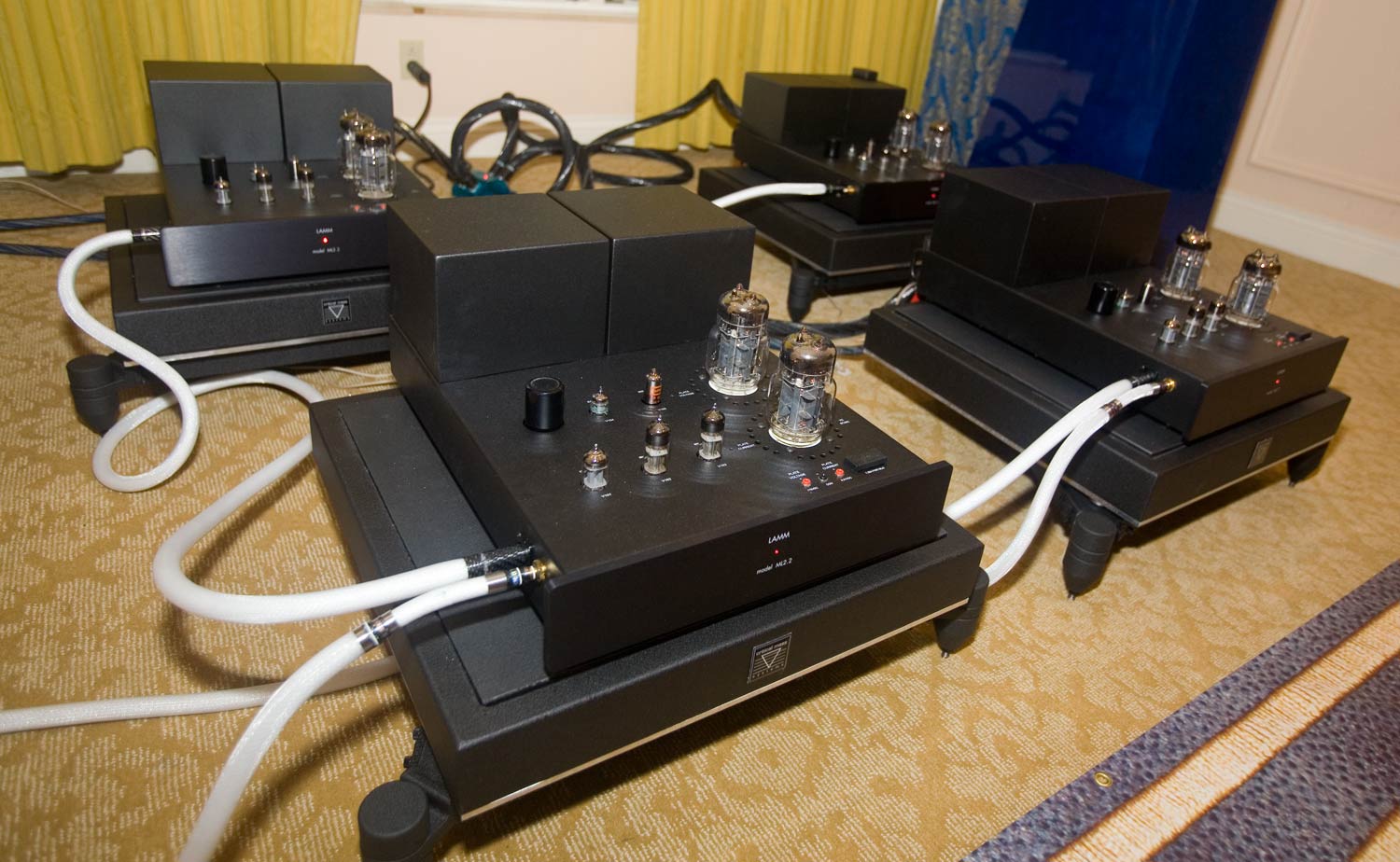Rerurn to Romy the Cat's Site
In the Forum: Audio Discussions
In the Thread: Initial thoughts about new/old Lamm ML2s
Post Subject: Daisy chaining ML2s & New sockets for 6C33CsPosted by jessie.dazzle on: 1/29/2011
fiogf49gjkf0d
Daisy chaining ML2s:
Over in the thread about CES 2011
http://www.goodsoundclub.com/Forums/ShowPost.aspx?postID=15482#15482
Romy posted a link to photos taken by Mike, the owner of Audio Federation
http://www.audiofederation.com/blog/
Scrolling down to the images of the Lamm ML2.2, I see something that intrigues me...

Four ML2.2s are used to bi-amp the Verity Audio speakers; I didn't know they could be daisy chained by using both the XLR and RCA inputs of one pair of ML2.2s (front pair in this case) to output an unamplified signal to a second pair.
Also, I'm curious about that black thing that looks like a tube shield...
New sockets for 6C33Cs:
I finally received and installed the new tube sockets for the 6C33Cs. Results: NICE!!!! Rock-steady plate current and voltage. The sockets I used have a solid machined Teflon base with receptacles that each have multiple contacts for the pins.
Before changing the sockets the sound had gradually picked up some glare (old sockets were probably micro-arcing like hell); the new sockets fixed that and, in the time I've owned them these amps have never sounded better (I'm the second owner). The sound now is now generally more relaxed and natural. I do not attribute the improvement so much to the Teflon, but rather to the pin receptacles and of course to finally being able to properly set the bias; for the past six months (prior to socket replacement) I had been running it at about half the recommended settings in order to keep things from going overboard during drift. With the new sockets, I have not tried listening with the bias turned down to half the recommended setting, but I should, as it would give me a feel for how much this factor alone might be contributing; however, in the past, varying operating points never seemed to make a difference of this magnitude.
The sockets did require some serious modification work before they could be installed; I took some close up photos showing the process; I'll post them if anyone is interested (I might not get to it instantly, as I'm neck deep in other stuff).
jd*
Rerurn to Romy the Cat's Site